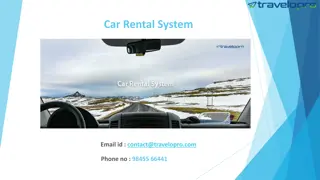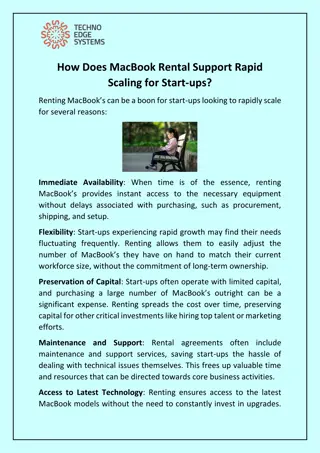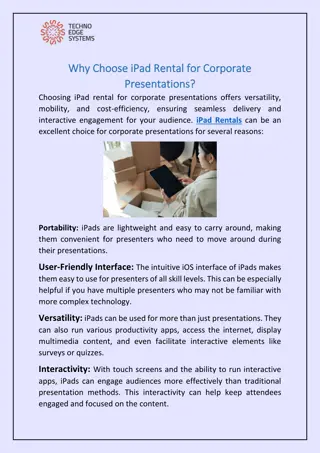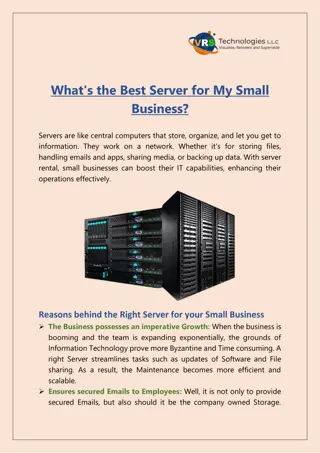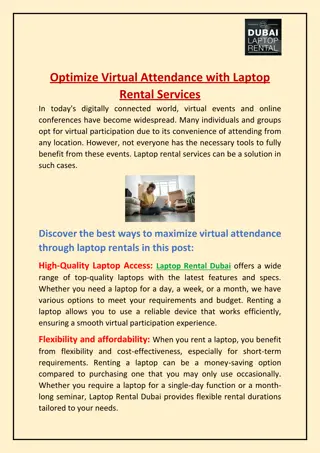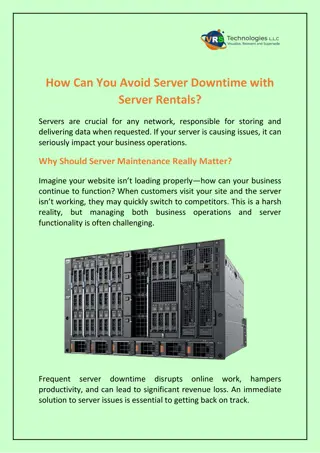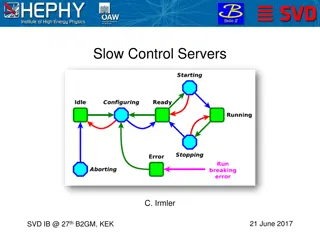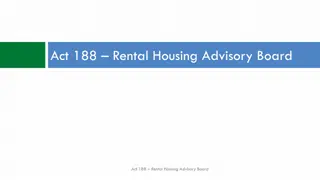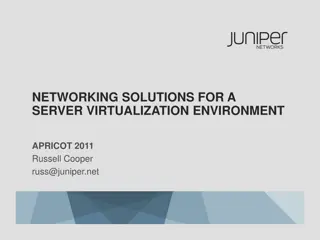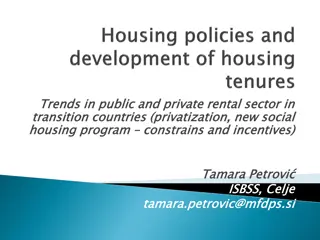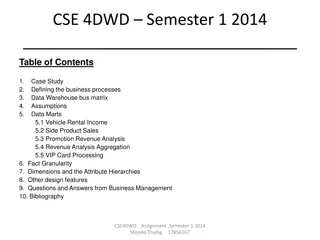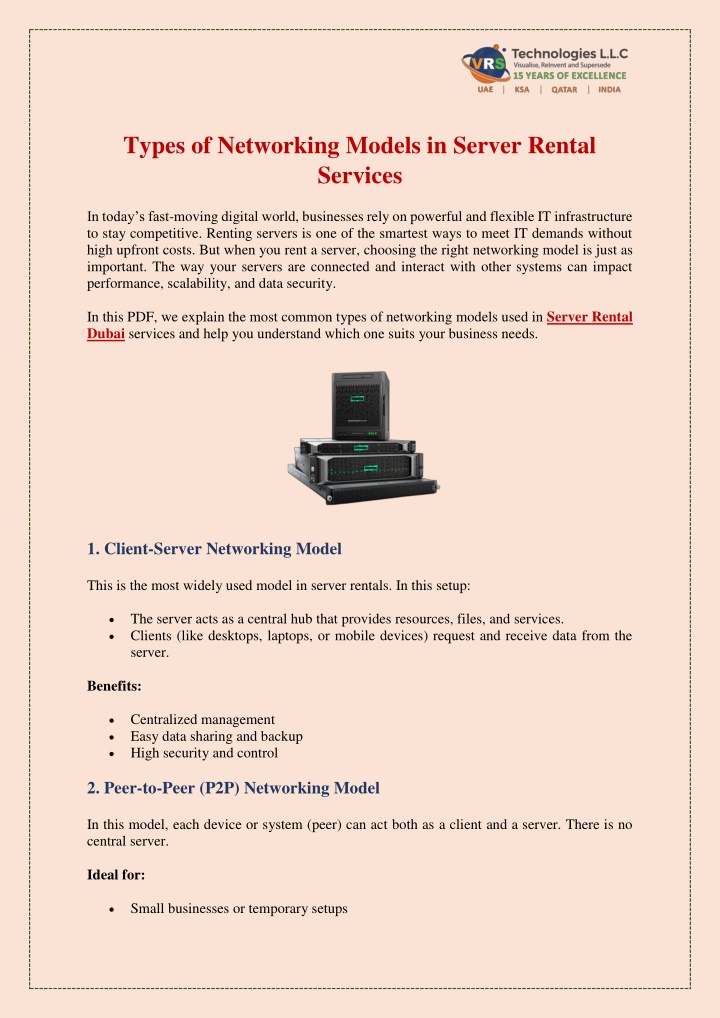
Types of Networking Models in Server Rental Services
At VRS Technologies LLC, we offer reliable server rentals in Dubai, contact us at 055-5182748.
Download Presentation

Please find below an Image/Link to download the presentation.
The content on the website is provided AS IS for your information and personal use only. It may not be sold, licensed, or shared on other websites without obtaining consent from the author. If you encounter any issues during the download, it is possible that the publisher has removed the file from their server.
You are allowed to download the files provided on this website for personal or commercial use, subject to the condition that they are used lawfully. All files are the property of their respective owners.
The content on the website is provided AS IS for your information and personal use only. It may not be sold, licensed, or shared on other websites without obtaining consent from the author.
E N D
Presentation Transcript
Types of Networking Models in Server Rental Services In today s fast-moving digital world, businesses rely on powerful and flexible IT infrastructure to stay competitive. Renting servers is one of the smartest ways to meet IT demands without high upfront costs. But when you rent a server, choosing the right networking model is just as important. The way your servers are connected and interact with other systems can impact performance, scalability, and data security. In this PDF, we explain the most common types of networking models used in Server Rental Dubai servicesand help you understand which one suits your business needs. 1. Client-Server Networking Model This is the most widely used model in server rentals. In this setup: The server acts as a central hub that provides resources, files, and services. Clients (like desktops, laptops, or mobile devices) request and receive data from the server. Benefits: Centralized management Easy data sharing and backup High security and control 2. Peer-to-Peer (P2P) Networking Model In this model, each device or system (peer) can act both as a client and a server. There is no central server. Ideal for: Small businesses or temporary setups
Teams where data is shared occasionally Benefits: Cost-effective Easy to set up No need for dedicated servers 3. Cloud-Based Networking Model Many companies are moving to cloud environments where servers are virtual and accessed via the internet. With server rentals, this model offers: Remote access to servers hosted in data centers On-demand scalability Easy integration with other cloud services Advantages: Reduces physical infrastructure Pay-as-you-go flexibility Access from anywhere 4. Hybrid Networking Model A mix of on-premises (local) and cloud servers. Businesses can use rented servers locally for sensitive data and cloud servers for other operations. Benefits: Balances control and flexibility Supports disaster recovery Better performance for critical applications Conclusion Selecting the right networking model is a key step in making the most of your server rental service. From simple peer-to-peer setups to complex hybrid systems, each model serves a different purpose. At VRS Technologies LLC, we provide expert guidance to help you choose the right configuration for your business. For more details, contact us at +971-55-5182748 or visit our website www.vrscomputers.com.





